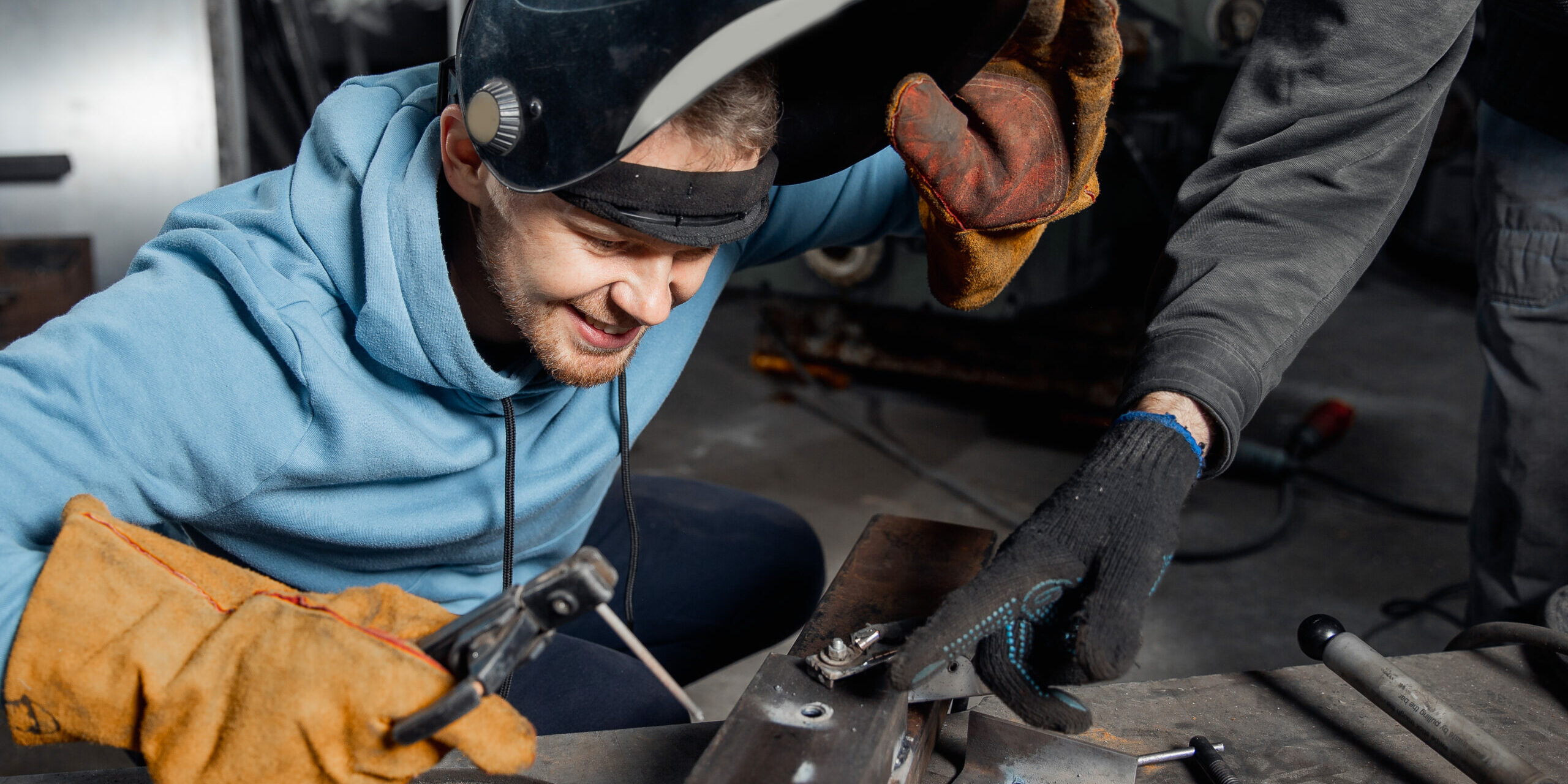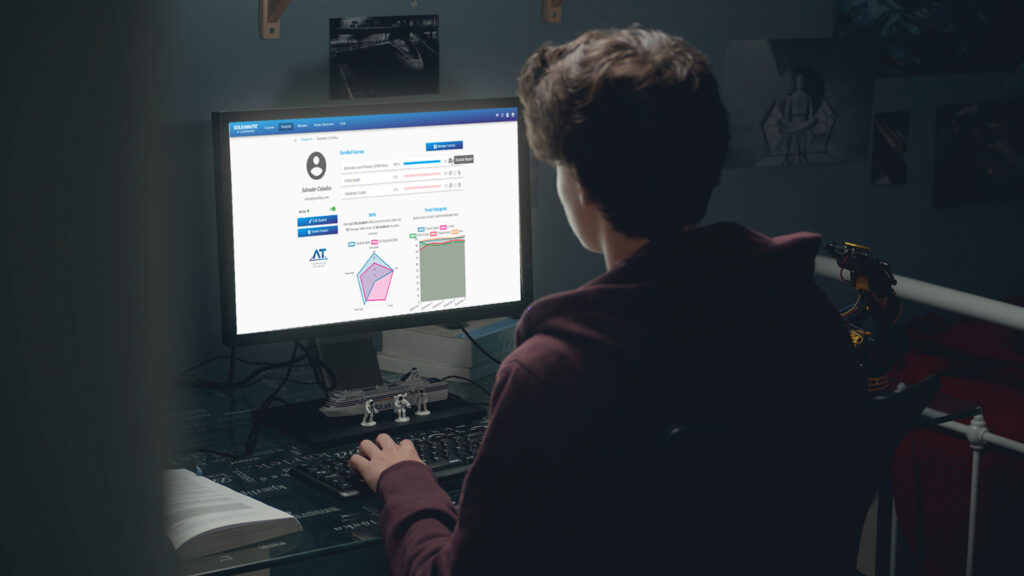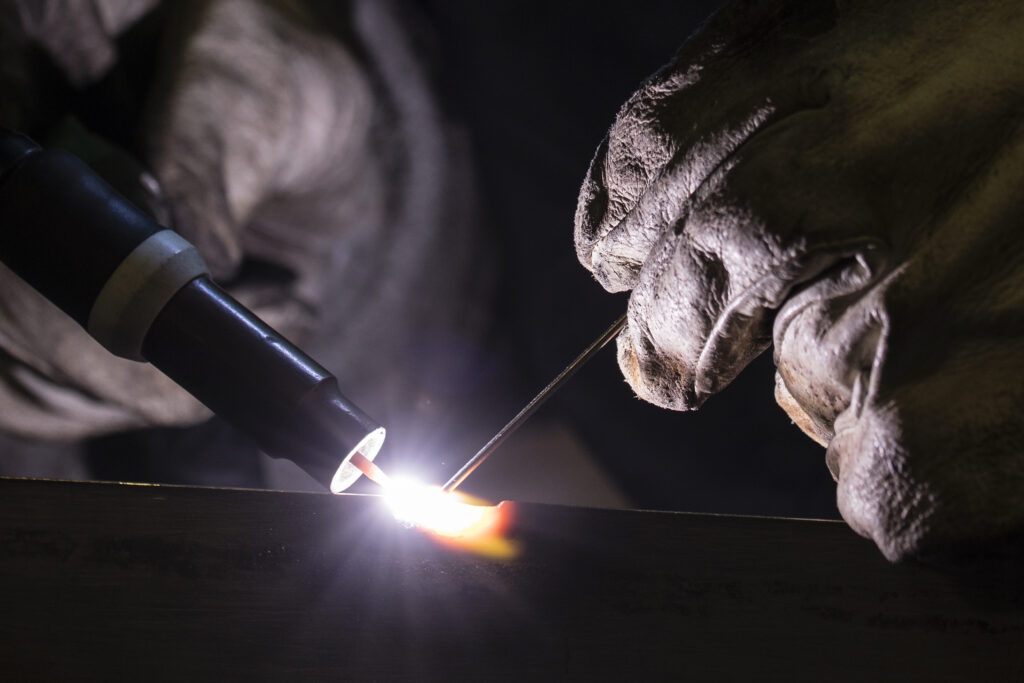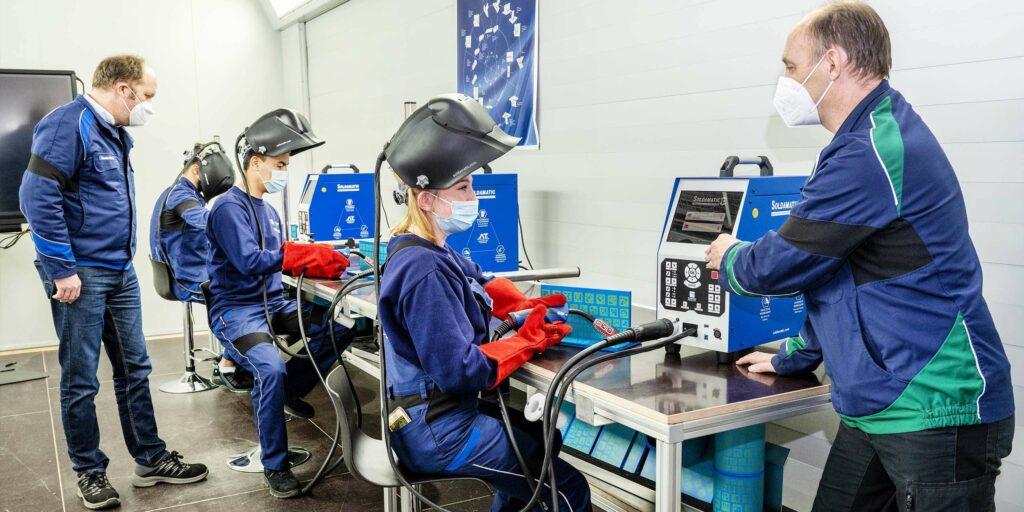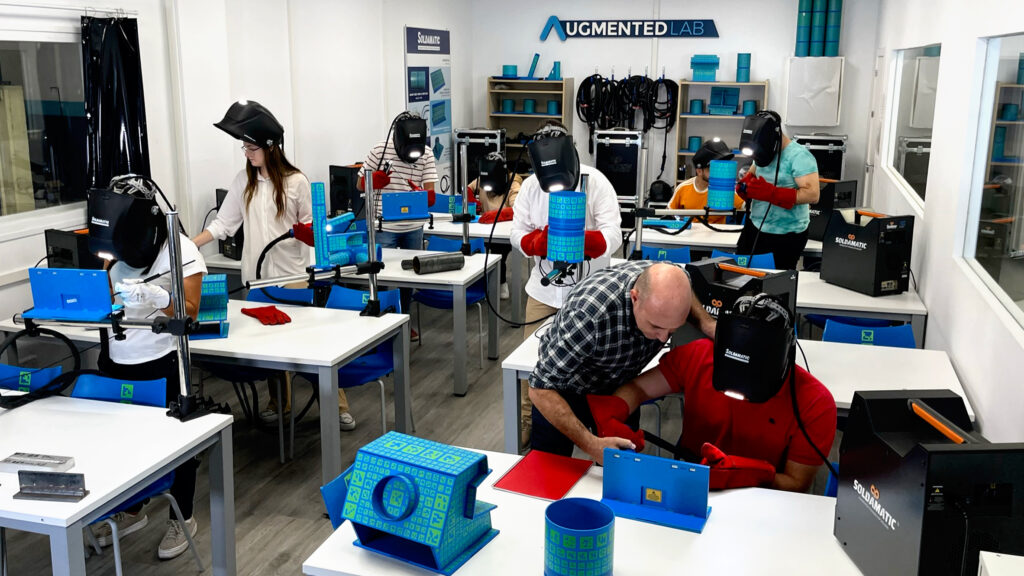Enrolling in welding courses can be instrumental in achieving your goals. However, with the multitude of options available, understanding the types of welding courses and selecting the most appropriate one can be overwhelming. This article aims to provide clarity on the different types of welding courses and guidance on how to choose the right one for your needs.
Comparison between a Welding Course and a Certification
Before going into detail on the subject, we will first analyze how a welding course differs from a certification. A welding course and a certification serve different purposes in the realm of welding education and training:
|
Welding course |
Certification |
|
| Purpose | Educational program designed to teach individuals the theory, techniques, and practical skills required for welding. | A formal recognition of an individual’s proficiency and competency in specific welding processes and procedures. |
| Timing | Welding courses can vary in duration, content, and level of complexity, catering to beginners seeking basic skills or experienced welders looking to advance their expertise. | To maintain certification validity, welders may need to periodically renew their certifications through retesting or continuing education. |
| Tests | Completion of a welding course does not necessarily result in formal certification, but it provides the foundational knowledge and skills necessary to pursue certification if desired. | Welding certification tests assess a welder’s ability to perform welding tasks according to specified criteria, including weld quality, adherence to welding codes and standards, and safety practices. |
| Content | Welding courses typically cover topics such as welding safety, equipment operation, welding processes (e.g., MIG, TIG, stick welding), metallurgy, blueprint reading, and weld inspection. | Certifications are often categorized based on welding processes (e.g., MIG, TIG, stick welding), materials (e.g., carbon steel, stainless steel, aluminum), and positions (e.g., flat, horizontal, vertical, overhead). |
| Offered by | Welding courses may be offered by vocational schools, community colleges, technical institutes, or training centers, either in-person or online. | Certifications are typically awarded by certifying bodies or organizations, such as the American Welding Society (AWS) after successfully completing standardized welding tests. |
As a summary, a welding course provides foundational education and training in welding techniques and practices, while welding certification verifies an individual’s competency and proficiency in specific welding processes through standardized testing and recognition by certifying bodies. Completing a welding course can prepare individuals for certification exams, but certification itself is a separate credential that demonstrates a welder’s skill level and qualifications to potential employers or clients.
Types of Welding Courses
Welding is a skilled occupation that requires a variety of essential abilities. Mastering the craft begins with choosing the right path of education. Welding courses offer a gateway to expertise, providing individuals with the knowledge, techniques, and certifications necessary to success in this diverse field. Understanding these levels will help you make an informed decision about which course best aligns with your goals and aspirations in the field of welding.
Level 1: Basic welding courses
- Focused on training.
- Designed for beginners with no prior experience in welding.
- Covers fundamental welding techniques, safety protocols, and equipment operation.
- Ideal for individuals looking to explore welding as a career or hobby.
Level 2: Advanced welding courses
- Aimed to experienced welders who are seeking to refine their skills and expand their knowledge.
- Focuses on advanced welding processes, such as TIG (Tungsten Inert Gas) welding, MIG (Metal Inert Gas) welding, and underwater welding.
- Emphasizes complex joint configurations, metallurgy, and weld inspection techniques.
Level 3: Specialized welding courses
- Tailored to specific industries or applications, such as aerospace, automotive, or pipeline welding.
- Addresses industry-specific standards and regulations.
- Provides in-depth training on specialized welding techniques and materials.
Level 4: Certification preparation courses
- Designed to prepare individuals for welding certification exams, such as those offered by the American Welding Society (AWS).
- Focuses on both practical welding skills and theoretical knowledge required for certification.
- It includes mock exams and practical assessments to evaluate the preparation for the certification process.
- Examples of careers available if you achieve and pass this level:
- Certified welder
- Welding inspection and non-destructive testing (NDT) methods.
- Quality assurance and defect detection.
Choosing the Perfect Type of Welding Course
It is crucial to approach your decision with a clear strategy in mind when navigating the diverse array of welding courses available. To ensure that you select a course that aligns with your skill level, goals, and aspirations in the field of welding here there are 5 key steps to help you choose the right welding course for your needs:
1. Assess your skill level
Evaluate your current level of competence before starting a welding course. Determine whether you are a complete beginner, already possess some welding experience, or consider yourself an advanced practitioner.
This assessment will guide you in selecting a course that matches your skill level, whether it is a basic introduction, advanced techniques, or specialized applications.
2. Define your goals
Clarify your objectives and aspirations in pursuing welding education. Do you want to acquire basic skills to start a career in the welding industry? Are you aiming to advance your existing skills and qualifications to pursue higher-paying job opportunities? Or perhaps you are focused on obtaining specific welding certifications required by your target industry or profession.
Defining your goals will help you narrow down your options and choose a course that aligns with your ambitions.
3. Consider the industry requirements
Research the welding techniques and certifications most valued in the sector you aim to join. Different industries may prioritize certain welding processes or certifications over others.
By knowing the industry requirements and expectations, you can tailor your course selection to meet the demands of potential employers or clients, which will improve your employability and career prospects.
4. Evaluate the course curriculum and seek recommendations
Take a close look at the content and structure of the welding courses you are considering. Look for comprehensive coverage of relevant topics, practical hands-on experience, and opportunities for the development and mastery of skills. A well-designed curriculum will provide you with the knowledge and training necessary to succeed in the field of welding.
Reach out individuals who have received welding training or are actively working in the field for information on welding courses or accredited training institutions. Do not hesitate to seek advice and recommendations from industry professionals.
5. Look for hands-on experience
While theoretical knowledge is essential, practical hands-on experience is equally crucial in welding education. Practical training not only reinforces theoretical concepts, but it also allows you to improve your welding techniques and gain confidence in your abilities.
Prioritize courses that offer extensive opportunities for practice and skill development along with theoretical instruction. Look for courses that provide access to well-equipped welding labs or workshops and experienced instructors who can provide customized guidance and feedback.
Augmented Reality Technology integrated in Welding Courses
Many vocational schools, technical colleges, and training centers have started to incorporate Augmented Reality (AR) elements into their welding programs to enhance the learning experience and provide students with hands-on practice in a virtual environment. Furthermore, this incorporation is likely to continue growing as technology advances and the demand for immersive learning experiences increases.
Soldamatic is a welding solution powered with AR. This state-of-the-art technology incorporates a specialized software and real welding equipment (welding torches, gloves, mask…) to simulate welding processes, materials, different thicknesses… You can practice as many times as you want while reducing fumes, risks, and material consumption.
In addition to that, a variety of welding courses in collaboration with well-known welding associations such as AWS, DVS, and CESOL are available by default adapted to your skill level. But you can also create and upload your own training content through the e-learning platform.
In addition to welding courses, Augmented Reality technology is already being used for welding certifications. Thanks to the agreement between TWI and Seabery, TWI has started to use Soldamatic simulators in its official certifications.
By integrating AR technology into welding courses, individuals can benefit from enhanced skill development, improved safety, and greater engagement with the material. Seabery has designed the “Augmented Training Methodology” to adapt the welding simulator to the industry requirements as well. An extensive catalogue of welding joints is feasible for those who are willing to take their welding to the next level. You can either start practicing with the training coupons (TWJ) and easier welding processes (f.ex. MIG/MAG) or improve your welding skills with the Advanced Welding Multijoints (AWM) or more precise techniques.
As you can see, AR-enhanced welding courses can help you access cutting-edge training opportunities and develop valuable skills in the field of welding.
Enhance your Skills with your type of Welding Course!
Investing in welding courses can significantly enhance your skills, open career opportunities, and ensure compliance with industry standards. By understanding the types of welding courses available and carefully evaluating your goals and preferences, you can make an informed decision in selecting the right course to embark on your welding journey.
Augmented reality training has emerged as a transformative tool in welding education, offering immersive and interactive learning experiences that complement traditional teaching methods. And remember, if you are an instructor or represent a training center, Soldamatic has an infinite number of courses configured to meet the needs and aspirations of your students. Contact us for further information.





